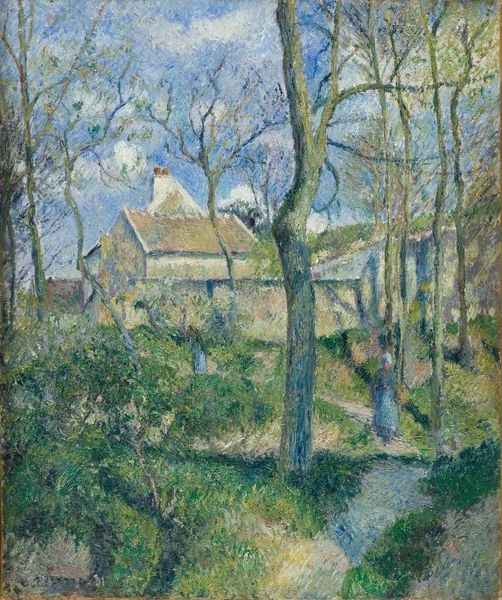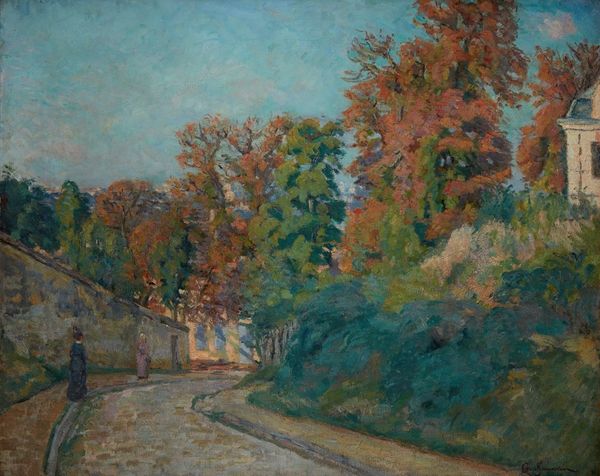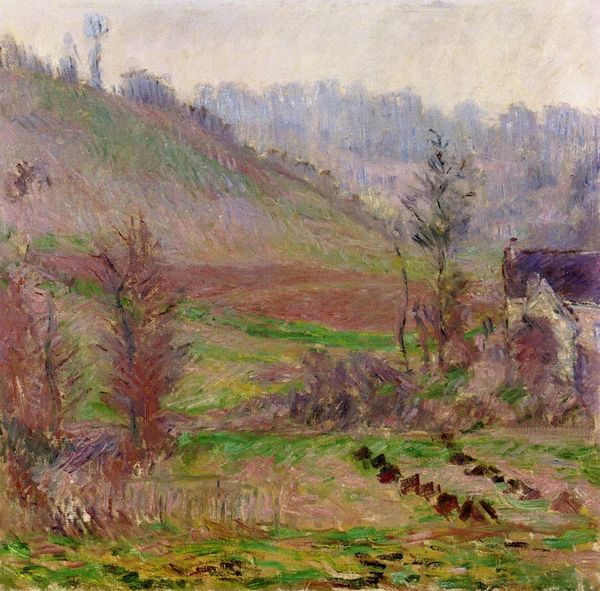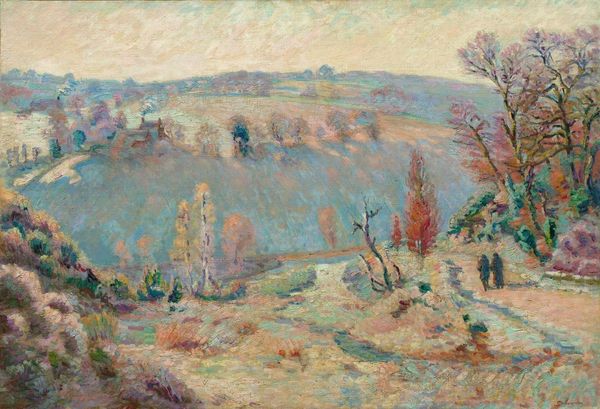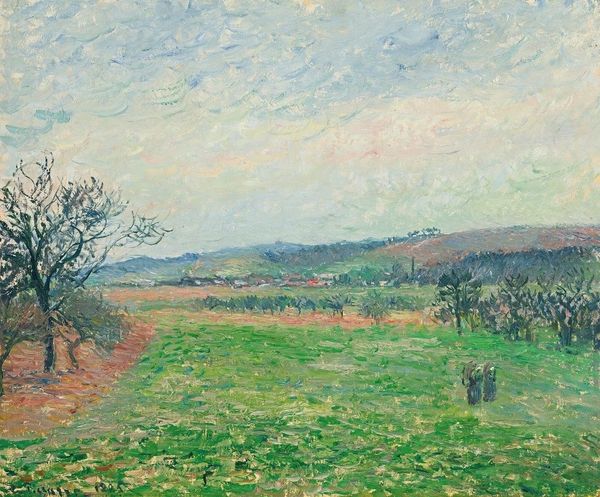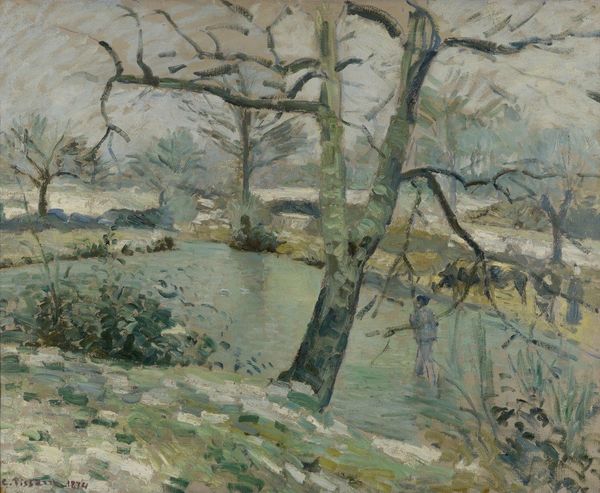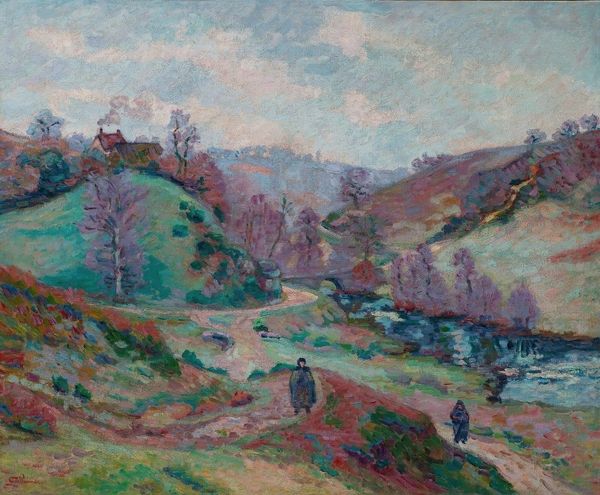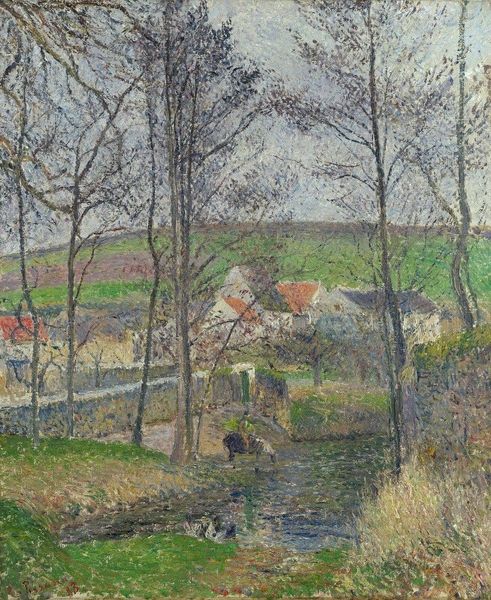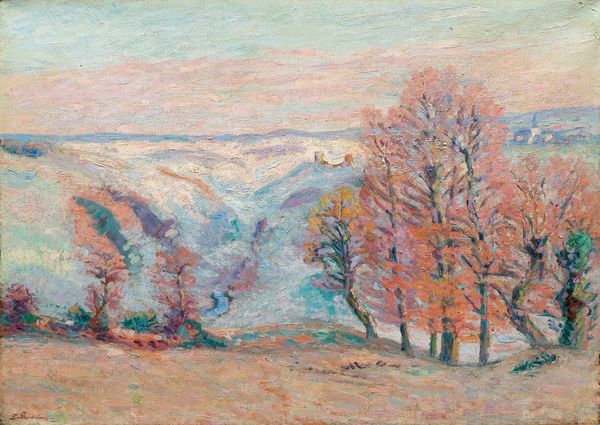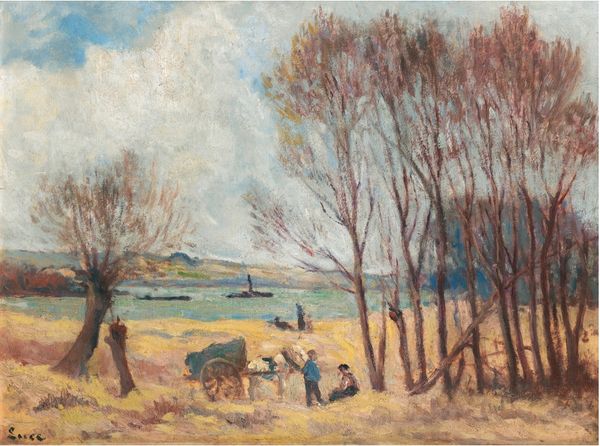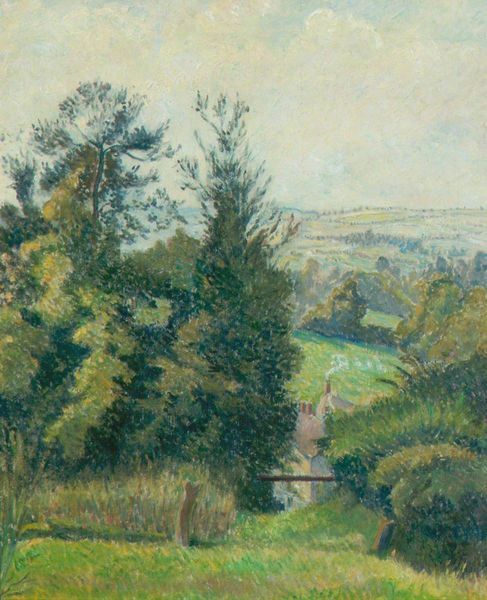
Copyright: Public Domain: Artvee
Curator: Armand Guillaumin’s 1885 oil painting, "Le chemin vers la vallée"—The Path to the Valley—captures a fleeting moment in the French countryside. Editor: The color palette hits me first—it’s this fascinating blend of autumn rusts and a hazy, almost lilac, sky. The overall feel is introspective, wouldn't you say? As if we're peering into a dreamscape. Curator: Absolutely, I get that. The birches definitely accentuate this sense of reverie and quiet contemplation, don't they? The figures in the background seem so far off, it’s like we're lost in the rhythm of nature ourselves. To me, the painting almost perfectly sums up the plein-air spirit, where the ephemeral and the external landscape intertwine with the artist's personal inner world. Editor: Birch trees are potent symbols across cultures. In Celtic lore, the birch embodies new beginnings and purification, which makes me consider the seasonal context of the painting: the quiet resignation as summer passes, and how it reflects an older woman carrying firewood, evoking themes of sustenance and resilience amid a life perhaps spent foraging for survival in these rough lands. The very composition, with its emphasis on a descending path, evokes the metaphor of life’s journey towards its close. Curator: A somber but lovely read of it! I think, though, that with Impressionism, the artist aims more to document light, perception, atmosphere. But even when artists intend objectivity, they still subtly impart their emotion—their subjective way of seeing. Editor: Well, even if light was Guillaumin's goal, the figure remains, ever present, adding such narrative depth. The use of figures almost demands an allegorical interpretation alongside Impressionistic fleetingness. What better way to examine light than against something substantial? It's all a complex interplay! Curator: A fitting way of seeing it, in my opinion. Overall, I think it is truly interesting how this image captures not only a time or place, but a reflection on our relationship with temporality, existence itself. Editor: Precisely, it encourages viewers to ruminate on universal human experiences reflected by simple elements that, perhaps, repeat, evolve, and adapt across generations, linking past, present, and the rhythms of nature.
Comments
No comments
Be the first to comment and join the conversation on the ultimate creative platform.


